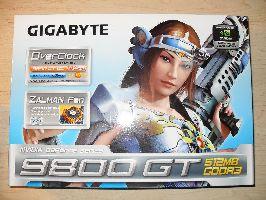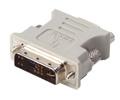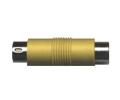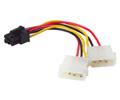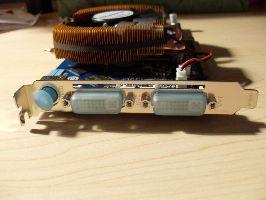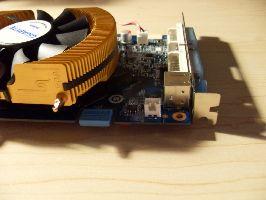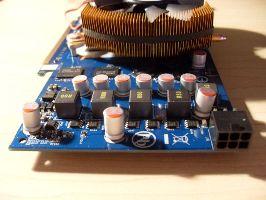
The Gigabyte 512MB 9800GT can neatly packaged in white/blue box with features strewn about the front. Gigabyte makes sure you know that their 512MB GDDR3 card comes with a Zalman fan and is overclockable up to 700MHz. The box is clever, and would draw the usual consumer to read it, especially with the girl and the gun on it.
After opening the box, we are greeted with a tightly packed graphics card, and many adapters. I must say that Gigabyte took you, the consumer, into account when packaging the card. They are very careful to ensure the card does not get damaged in shipping, and also ensure you have every adapter needed to use their 9800GT to its full potential. You will find two DVI to VGA adapters, one DVI to HDMI adapter, an S-Video to Composite adapter, a SPDIF cable, and an external power cable.
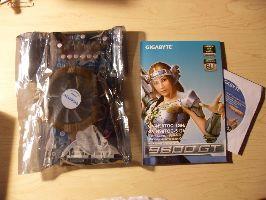 |
The Gigabyte 9800GT has many interesting aspects about the card, including the color of the card's PCB (printed circuit board). It seems to be somewhat of a teal color, and contrasts the goldish/bronze Zalman fan strangely, but nicely. Gigabyte is well known for having interesting color schemes like these, and this color scheme definitely carries into their 9 series cards. From the front, we see the low RDS MOSFETS, ferrite core chokes, and all-solid capacitors referenced on the previous page. These are laid out nicely on the right side of the board. We see two fan connectors, both one on the bottom left, and another on the top left of the card. The Zalman fan is fairly un-obtrusive, and fits decently on the PCB. Because of the thick nature of the Zalman fan, this causes the card to take up two PCI slots worth of room. I'm sure a low clearance water block would allow you to stack the cards in a single PCI slot though.
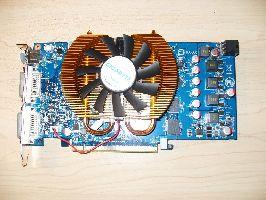 |
From a side view, we see that Gigabyte has neatly placed dust covers over each port. This is a nice little addition since we don't want our components to short out from dust. The S-Video jack is located closest to the PCI bracket flange, and we see our two DVI connectors next to it. There also seems to be some sort of porting above the connectors, which should allow for airflow I assume.
Moving to the top of the card, we see that second optional fan connector, as well as the covered SLI bridge tab. Again, dust is our enemy, and this serves as a safeguard against ESD (Electro-Static Discharge).
From the right side view, we see that the card uses a single 6-pin power plug, and is conveniently located on the side/front of the board. We also get a better view of Gigabyte's proud components.
Now let's move on to testing!
OTHER RELEVANT REVIEWS
REALTIME PRICING ON THE NVIDIA 9800 GT
